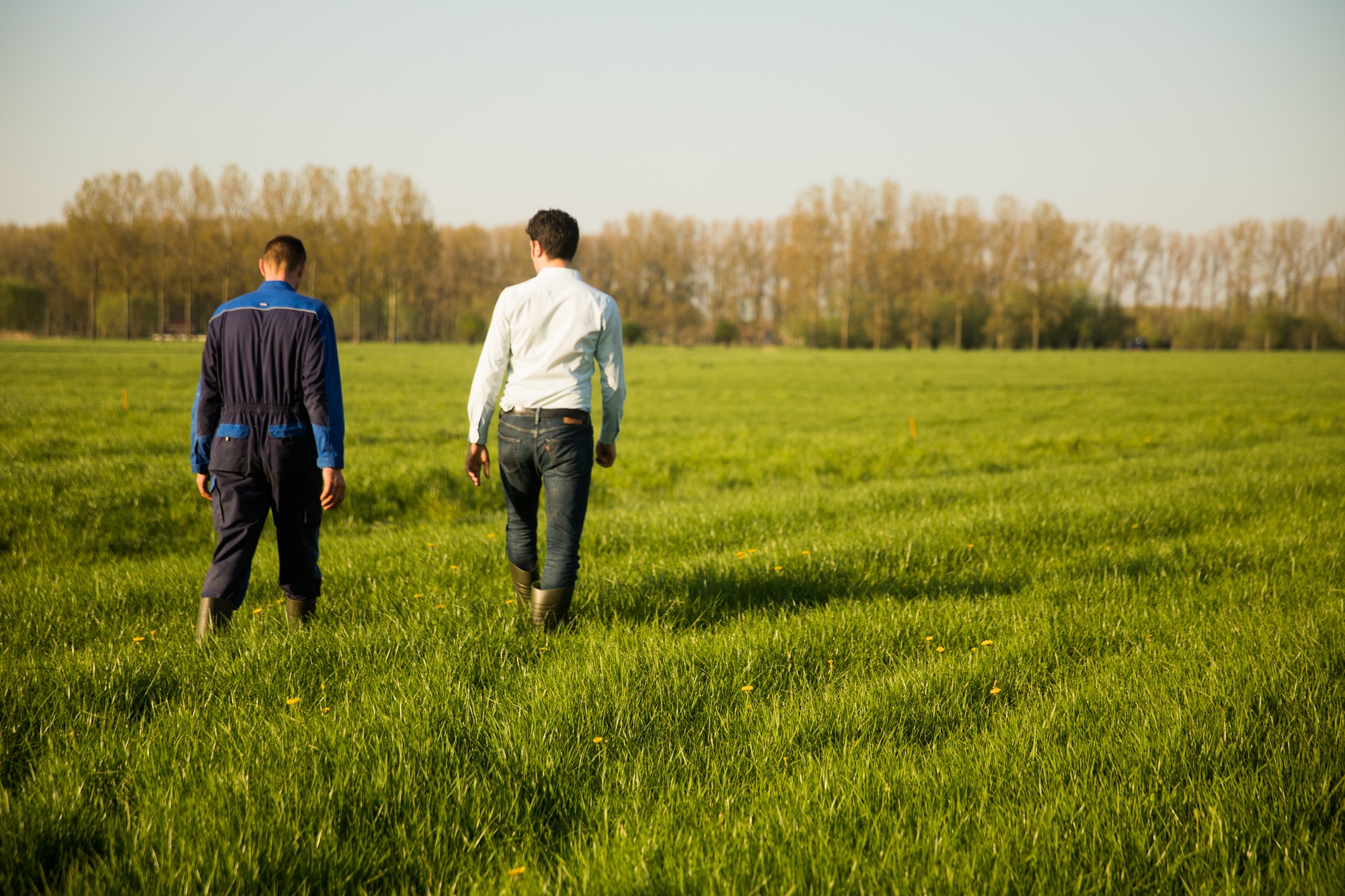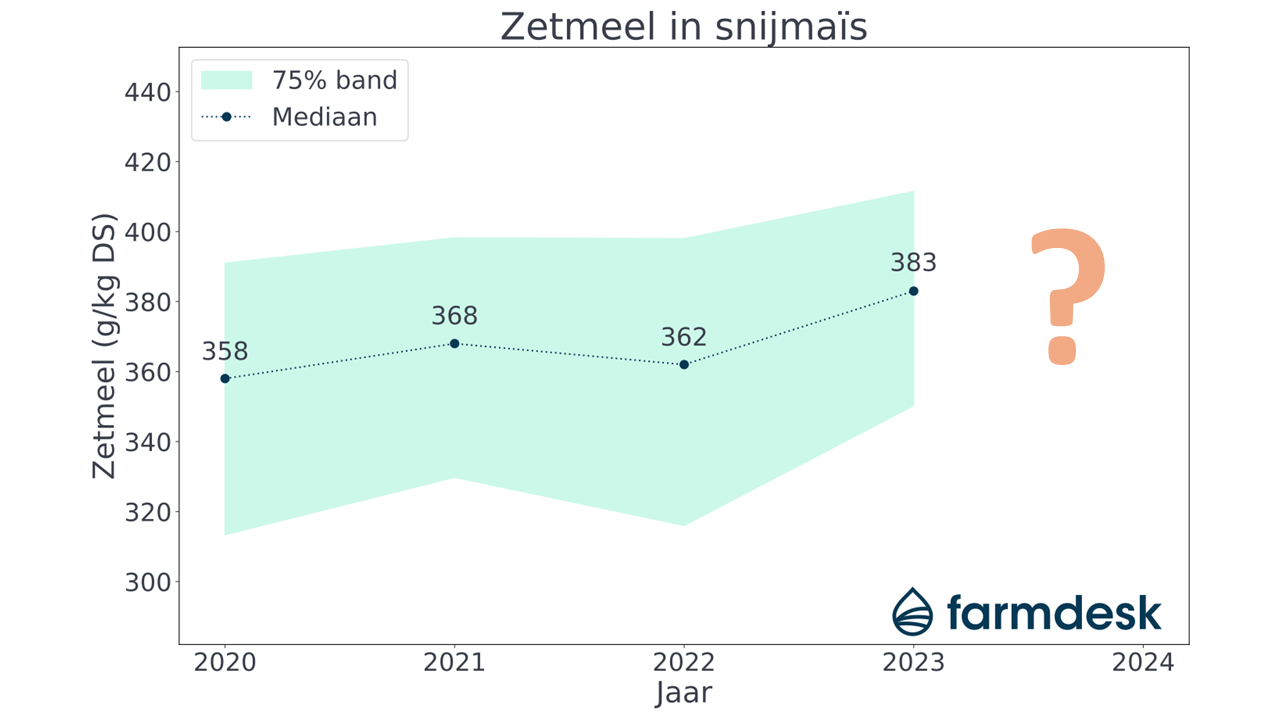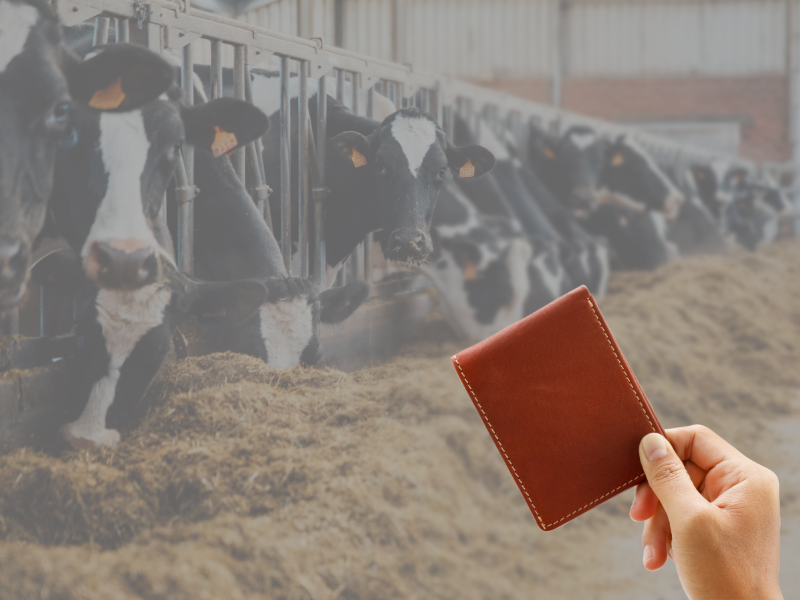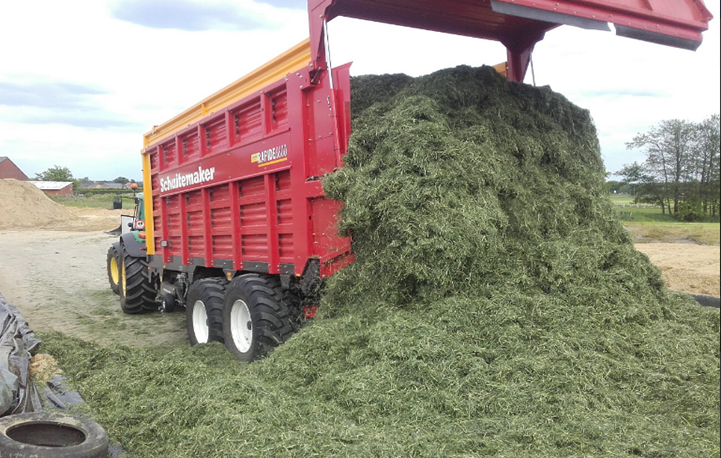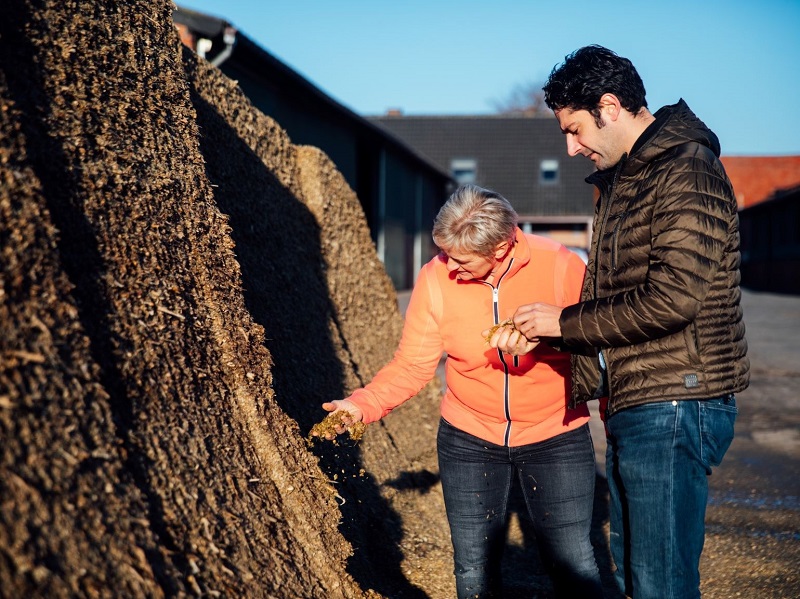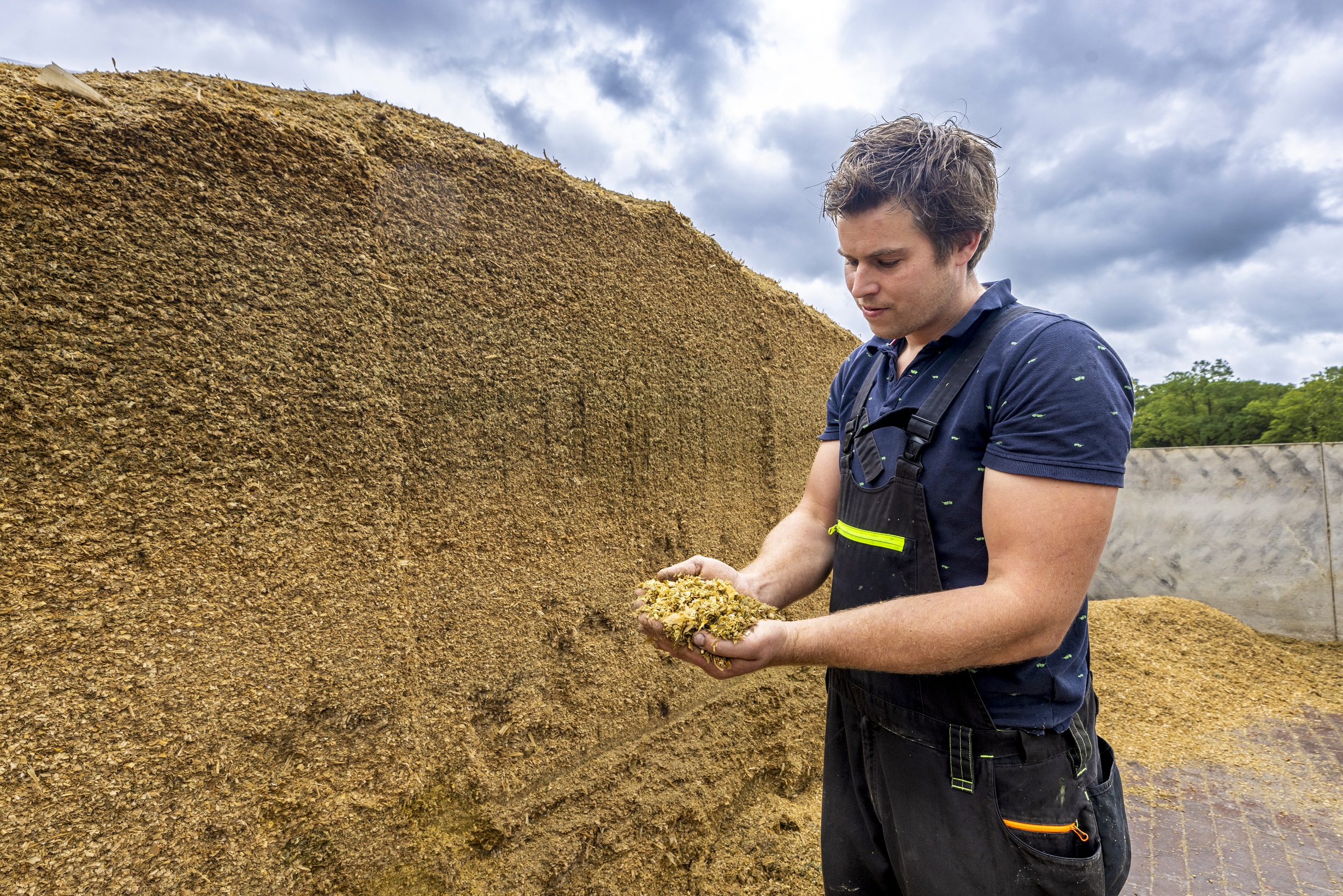With forage supplies still rather high on most dairy farms and concentrate feed becoming expensive, fresh grass (grazing/stall feeding) can provide a nice season start.
Fresh grass in spring is rapidly digestible in terms of energy, contains a favorable DVE/OEB ratio and can thus be readily used as a concentrate feed replacement.
Fresh grass versus standard compound feed
The 2021 season's grass silage supply is rather stiff, slow-digesting on energy on many farms. In winter 2021/2022, we were able to accommodate this by feeding relatively less cut corn in exchange with MKS or by including fast-digesting beets in the ration. However, many also went back to more purchased concentrates to increase the rate of digestion in the ration.
However, the power food was meanwhile very expensive and the grass is starting to grow.
Through the fresh grass module in Farmdesk, fresh grass forage values are forecast twice daily based on the weather forecast at normal fertilizer levels.
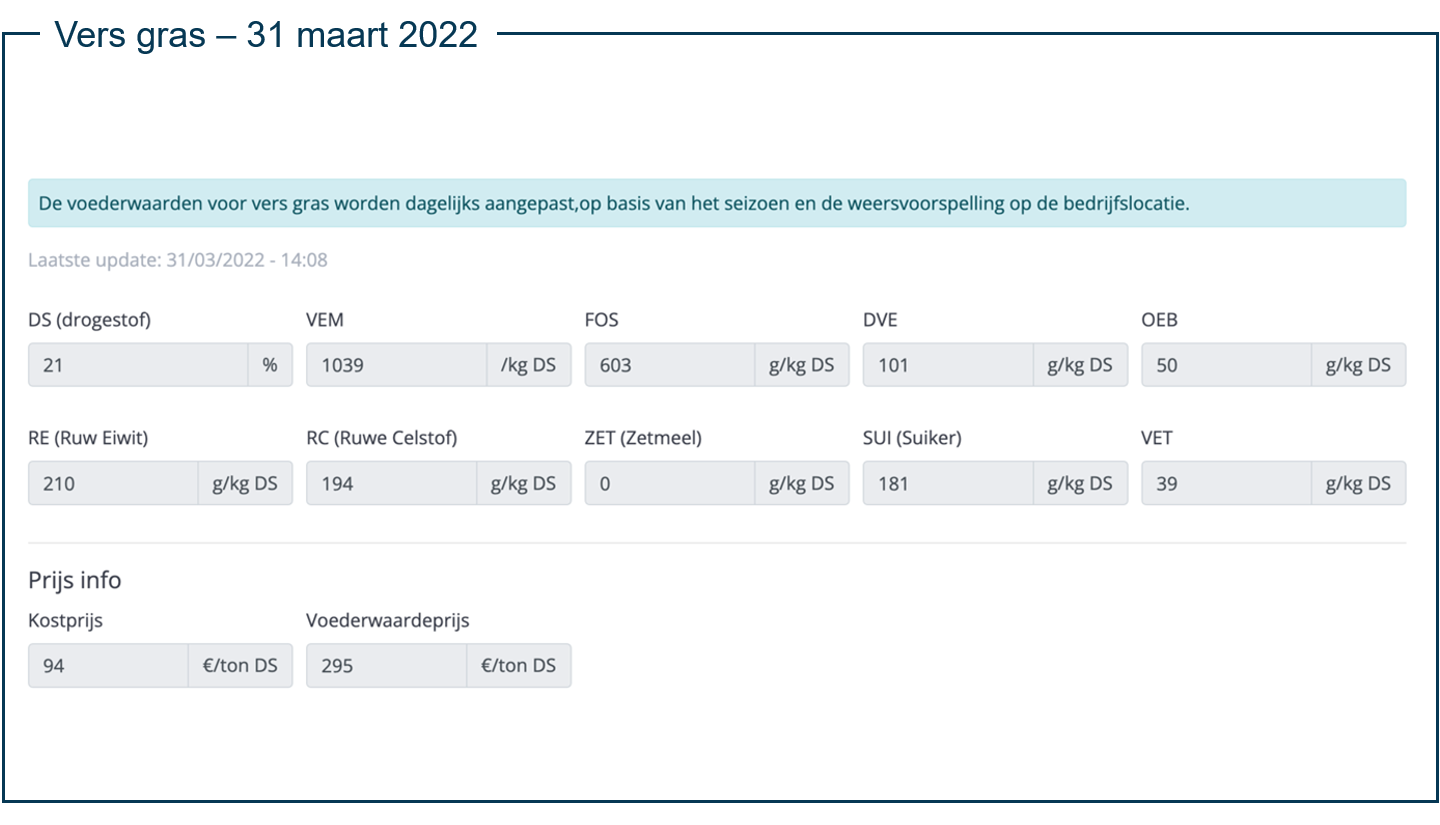
Above is an example of the predicted grass composition on 31/3/2022 from a Farmdesk farm, nearly comparable to a B crock? Please note that feed values for concentrate are expressed per kg of product by default. In this comparison, we have converted this per kg dry matter, thus becoming 940 VEM/kg PR → 1056 VEM/kg DS.
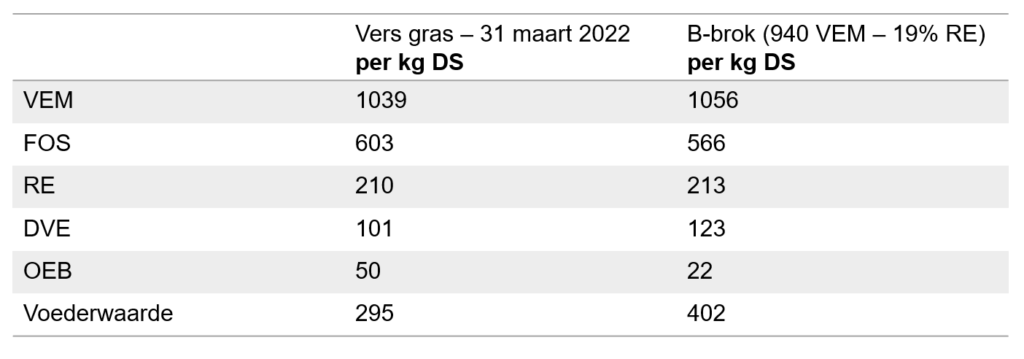
With the rather slow digesting grass silage of 2021, this fast digesting spring grass fits very nicely. Previously extensive farms that underfeed during the winter because of concentrate costs also find that production can increase with fresh grass in the spring.
Assuming a +100 VEM and +30 g DVE/kg DS in fresh grass compared to grass silage, we arrive at a production capacity increase of 1 kg VEM milk and 2.8 kg DVE milk at 4.25% fat and 3.45% protein in milk at an intake of 4.7 kg DS from fresh grass compared to silage. On extensive farms last week, we saw milk production increases of just under 2 kg of milk if cows were given full access to grazing pastures for half a day. Well be careful that cows do not become too thin on this regime....
Previously intensive farms that did buy concentrate feed in the winter despite the expensive purchase price can mainly save on this concentrate purchase and associated costs.
"In short, for every farm operation there is something to pick up economically, especially with these expensive concentrate feed prices and high harvest and silage costs."
Wim Govaerts
Weather influence
However, there was a reason why dairy farmers abandoned grazing in the past.
Fluctuations in grass composition based on weather influences often produced a changing ration. This caused milk production to fluctuate, and after a downturn, it was often difficult for cows to return to production. A tightly balanced silage ration in the barn in the summer thus often produced a more stable milk production that ended up higher over the entire year.This was, however, at lower concentrate prices and lower harvest and silage costs than today.
Now that these have risen, the challenge seems to be to take the benefits while trying to avoid the drawbacks.
In very sunny weather (especially in combination with cold nights), sugar content and FOS in the grass increases and DVE/OEB increases. Whereas in drizzly weather, just the opposite movement is visible in grass quality.
Playing with cut corn and MKS
If dairy farmers want to work more with company-owned feed, they can also play around with cut corn and MKS. Putting relatively more cut corn in the base ration in very sunny weather can bring peace of mind. While relatively more MKS in drizzly weather, in turn compensates for the lower energy content of the grass at that time and provides relatively more DVE compared to when steering.
Note that with the latter strategy it is also important to make crop growth as gradual as possible over the year. Here, urea fertilization can be more interesting KAS fertilization due to the slower release of nitrogen. Through urea fertilization the nitrogen is released more gradually and thus gives rise to a more stable protein content in the fresh grass.
"In short with more expensive feed, dairy farming becomes even more exciting, even more skill-based!"
Wim Govaerts

